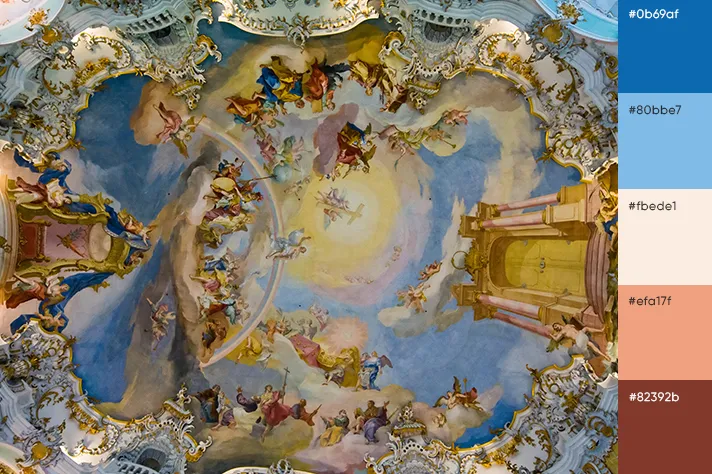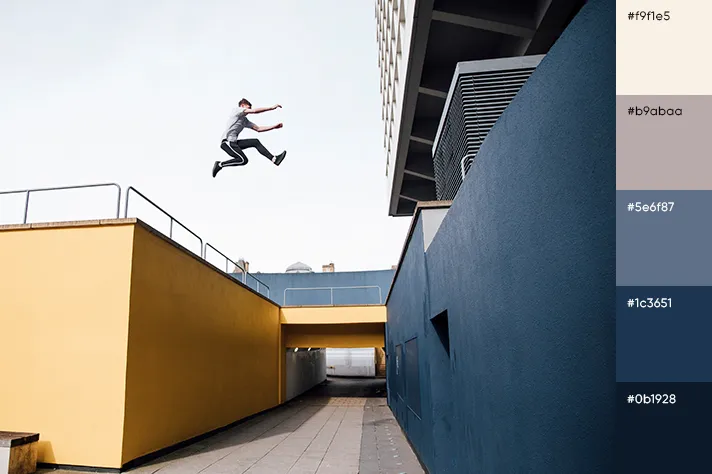Speculative Design Projects That Will Blow Your Mind
Design that we see on a daily basis is partially limited to practicality. Its goal is to primarily solve existing problems or at least make this world a slightly brighter place. In 2019, it’s simply not enough. In the era of rapid technological development, this approach is a form of denial of the difficulties and challenges the future has in store for us.
Speculative design is an interesting field of design that aims to model the possible scenarios of the future. It questions things like what could happen if we give up our integral rights and freedoms in favor of a state. What if gadgets start to control our behaviors? Or, maybe, a woman decides to deliver a shark instead of a child? As interesting as it sounds, we thought to cover all the highlights of speculative design.
We put this article together after one of our events – Creative Loop: Kyiv-Berlin. During this event for creatives, an art-director of a Berlin-based studio, Super an der Spree Anfisa Hleb, – who researches speculative design phenomena – told us why it’s not enough to deal with one thing at a time and which projects we should start paying attention to.
What is speculative design?
Speculative design emerged in the early 90s as a blend of discursive and critical design practices. Although being a relatively new phenomenon, it managed to become a large-scale platform for discussion of ethical, cultural, social, and political implications.
In the book “Speculative Everything”, its pioneers Anthony Dunne and Fiona Raby say that speculative design began to prosper because of imagination. Working on such projects, designers have complete freedom of action. They constantly seek new solutions, as the aim of speculative design is to create products and services for different “What if ..?” scenarios.
The practice shows that creatives prefer to speculate on the most terrible situations that society may encounter some time in the future. Hopefully, their projects will help us make the world a better place to live in.
5 speculative design projects that will blow your mind
1. Facestate
Facestate is a research project by an Amsterdam design studio Metahaven that criticizes contemporary liberalism.
In Facebook, we talk a lot about the importance of human rights and freedom. We often share initiatives on a state’s non-interference in the economy and like posts about a free market. However, the most popular social network in the world is not going to comply with these principles. Facebook is fighting for a monopoly and, owning WhatsApp, Instagram and a dozen other large companies, boldly changes user agreement conditions in its favor.
These consequences of Facebook’s influence on our lives are described in the Facestate project in detail. What if the social network becomes an independent state that makes the theory of social contract a reality? As blindly accepting any user agreements, we allow Facebook to control social processes.
To showcase what would happen if people give up their rights in favor of a hypothetical state, designers have created an identity of a fictional Facestate that includes a passport, a face recognition device, a digital wallet and other items in line with their concept.
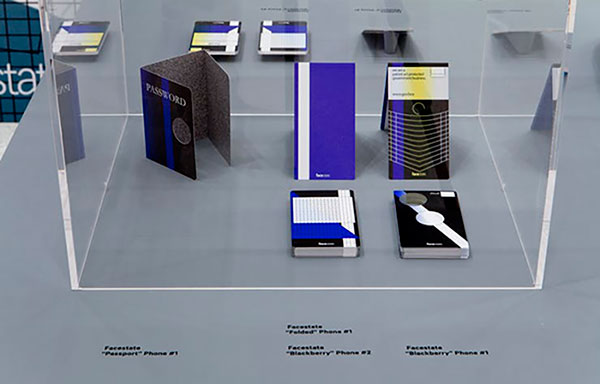
Metahaven’s Facestate / Walker
2. After Man: A Zoology of the Future
Dougal Dixon wrote the book “After Man: A Zoology of the Future” in 1981 but it remains relevant even today. The author suggests that in 50 million years after the extinction of humanity Europe and Africa, Asia, and North America will become newly-formed continents, and South America will separate from Central America. These changes will provoke the next evolutionary processes, and new species of animals and plants will appear in the world.
To make his suggestions less terrifying for the audience, his hypothesis is based on the evolution theory and contemporary ecological changes. Now, the estimated future does not seem frightening and provocative, as the book is filled with illustrations.
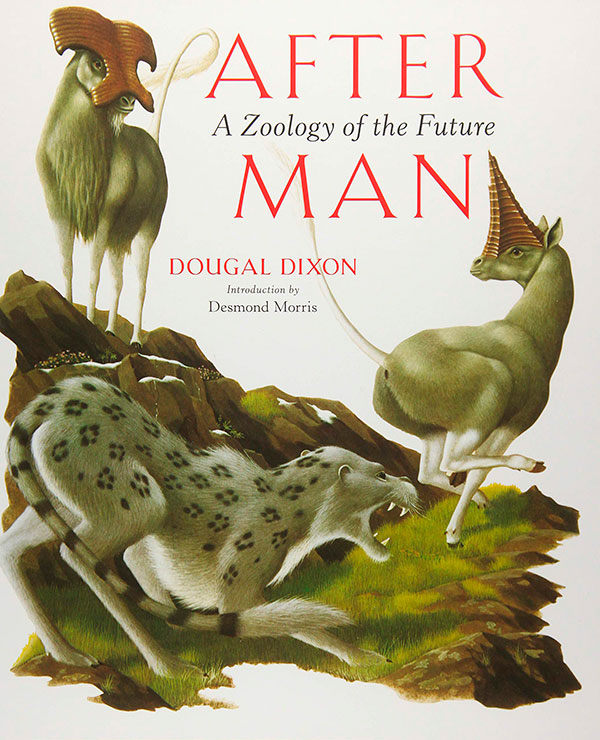
After Man: A Zoology of the Future / Amazon
3. I Wanna Deliver a Shark
According to the non-commercial organization Forum for the future, by 2025, the world population will increase up to one billion people. This number leaves everyone stunned and concerned but Ai Hasegawa was brave enough to find a solution to this issue.
He suggests that in the future, an alternative technology will appear which will allow women around their 30’s to become pregnant with an endangered animal. Thus, using biomedicine, we can avoid overpopulation of the planet and make the reproductive power of the female body useful.
Although the project looks like a fantasy of a mad artist, Ai Hasegawa’s theory is research-based. The designer has conducted a scientific study and developed a scheme of how it all could look in reality.
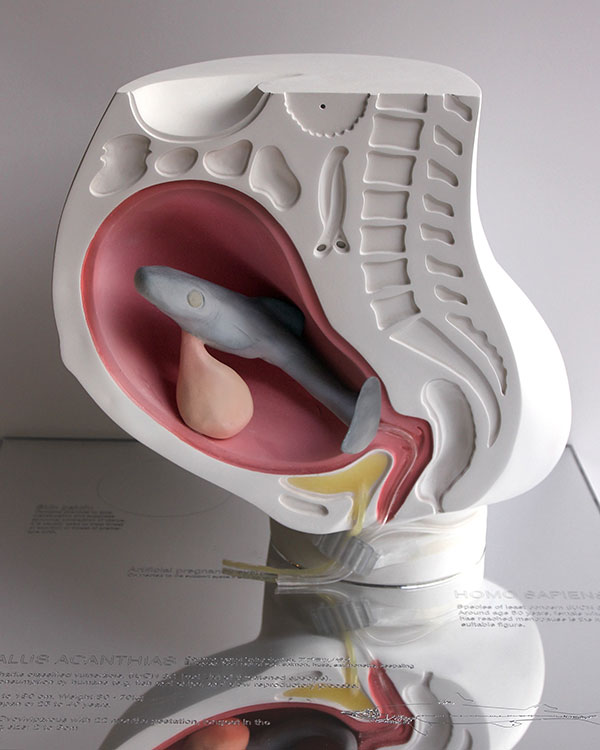
I Wanna Deliver a Shark / Ai Hasegawa
4. The Natural History of Enigma
Eduardo Kac is a designer who works on science-related projects. He aims to make biotechnology more poetic and philosophical. For example, in “Natural History of Enigma”, he tracks the relationship of life between different species.
It took the designer five years to create a new form of life – a genetically modified flower “Edunia” – a hybrid of Petunia and himself. The red lines are the veins of Eduardo, and the petals have the color of human skin.
Although there are a lot of questions about if such a future can be regarded as a realistic one, the project is not just a plot of imagination. The scientist N. Olszewski helped to get Eduardo DNA for the experiment.

Natural History of the Enigma / Eduardo Kac
5. Belief Systems
It seems that speculative design lacks irony and Bernhard Hopfengärtner worked on it quite well. In the project, the designer makes fun of the universal desire for freedom of choice, as with the help of technology we are trying to make our lives as easy as possible and avoid the responsibilities of decision-making.
We rely on algorithms to generate news in our feeds, to offer products in online stores, to suggest which movies to watch or where to go for lunch. The proposed solution is that all ll decisions that a person has to make in everyday life can just pass them on technology.
For the “Belief Systems” project, Bernhard Hopfengärtner has developed six different video scenarios of the world, in which gadgets control people through emotions. In one of them, neurotechnologies read facial expressions of the newlyweds and predict the likelihood of their divorce within 15 next years with an accuracy of more than 90%.
The other one speculates on the situation when one needs to buy a kettle. To do that, you go to a machine, make a payment, and get access to dozens of teapots. As the pictures change, the machine scans one’s facial expression and decides which kettle you want.
The proposed scenario is a call for us to think if we really want technologies to unite to ease any kind of manual effort.
Belief Systems / Bernd Hopfengaertner
In general, these projects about pregnancy with a shark, a flower with a human’s DNA, and gadgets that control our decisions predict the worst scenarios that can happen in the future. Designers ask questions not only for themselves but also for the entire society.
Designers focusing on speculative design try to imagine our future or the world of tomorrow that might just change gradually or all at once. Perhaps these bizarre concepts, ideas, and technology will not seem so strange in the foreseeable future. We simply don’t know.




